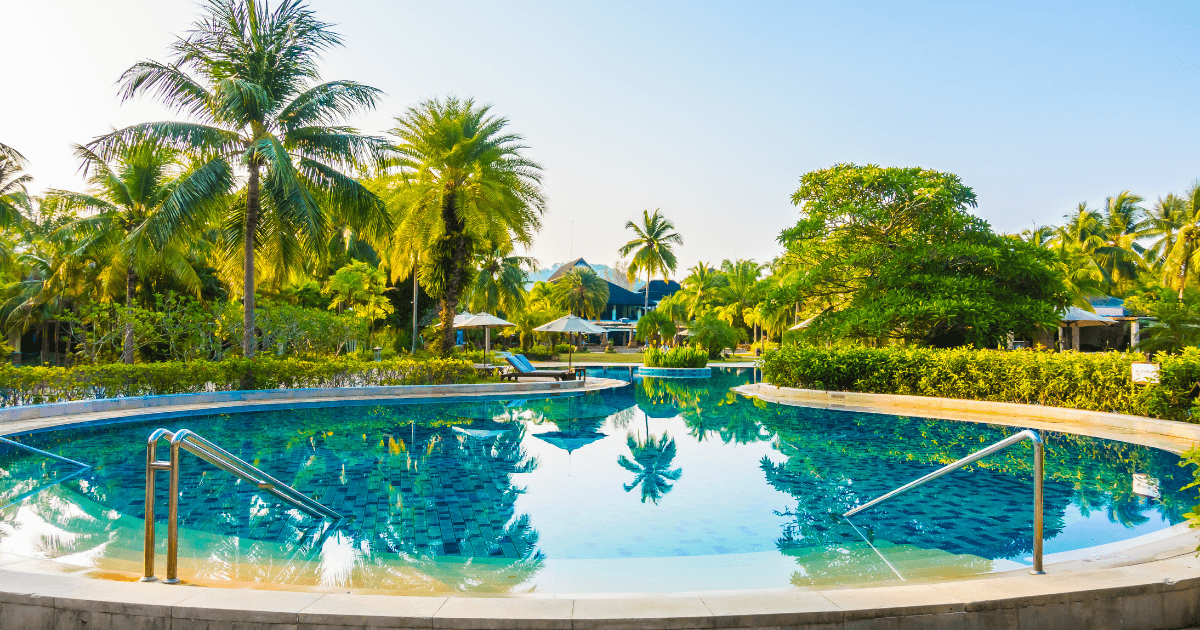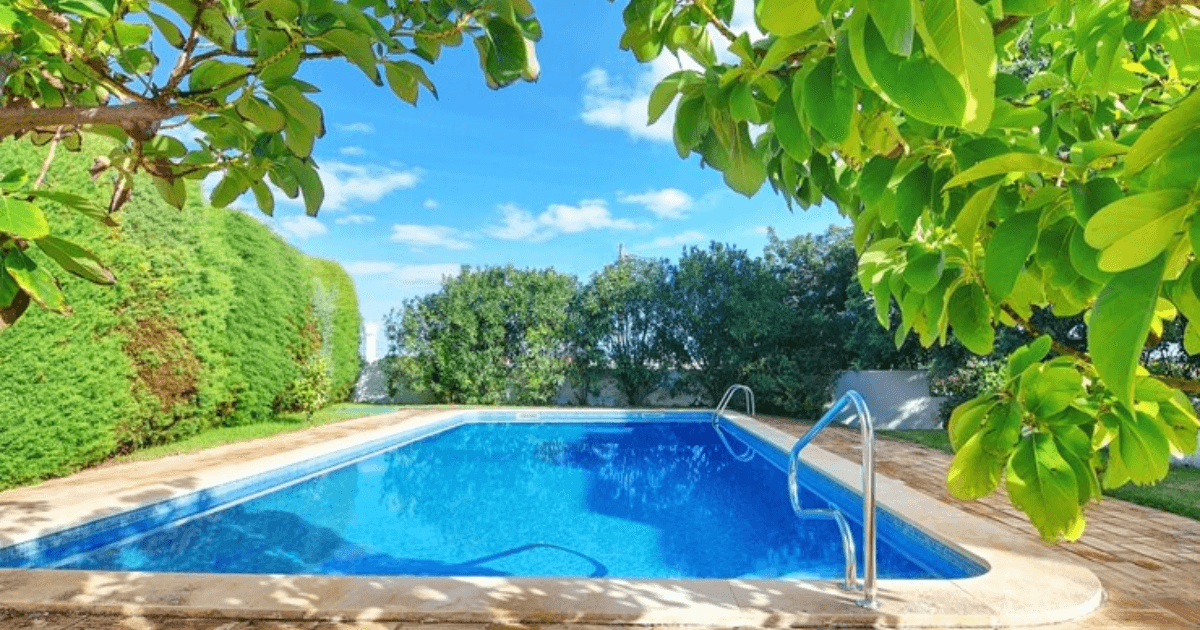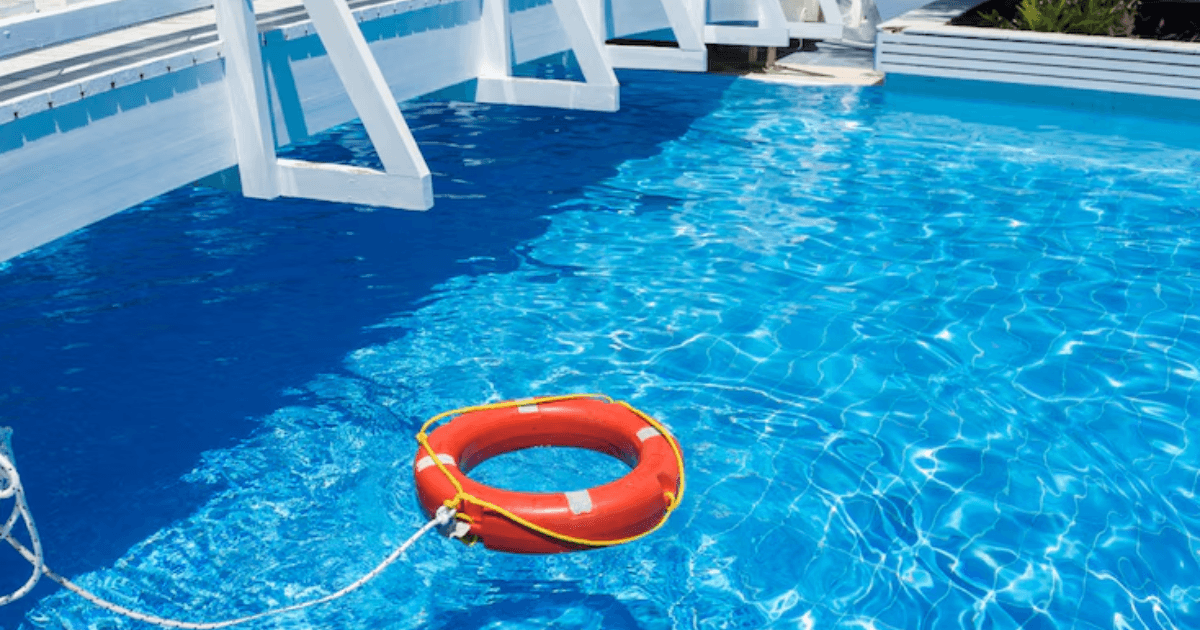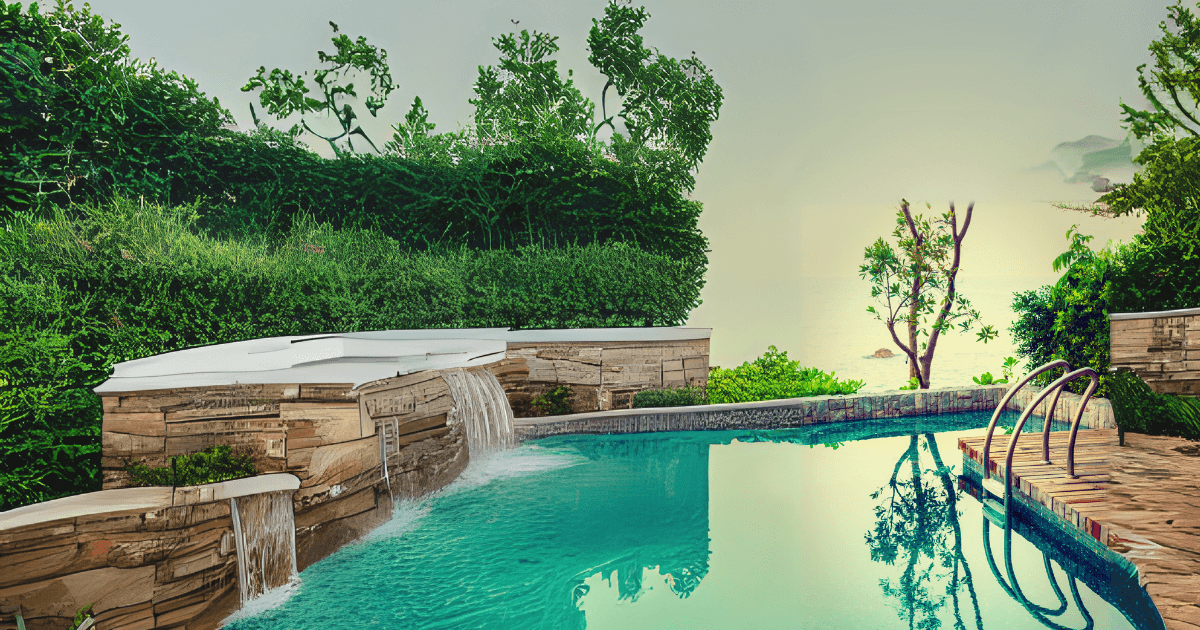Introduction
In just 48 hours, algae can turn your pool from a beautiful and sparkling pool to a green swamp. I’ve seen how annoying and ugly this can be. But don’t worry, getting rid of algae does not need to involve strong chemicals that are bad for environment. Using eco-friendly ways will not only keep your pool looking great, but it will also help protect environment. I’ll walk you through a safe and effective step-by-step process in this article. You’ll learn valuable things that work, like scrubbing naturally and using eco-friendly cleaning products. Imagine jumping into water that is so clear you don’t have to think about dangerous leftovers! Let’s use nature to make your pool a beautiful haven. Are you ready to get rid of algae for good? Let’s jump right in!
Understanding Algae Growth on Pool Walls

When the conditions are suitable, algae, tiny creatures that look like plants, do very well in pool water. They grow on pool walls because of things like sunshine, warm water, and water chemistry that isn’t balanced. Algae can quickly grow in pools with low chlorine levels with low chlorine levels, or pH levels that aren’t kept at the right level. They can turn your pool green or leave slimy spots behind. Green algae are the most common and easiest to find and treat. Yellow or mustard algae stick to surfaces and are more challenging to get rid of, and black algae are known for having dark spots that are hard to get rid of. The best ways to stop algae growth are to brush the water often, ensure the sanitizer levels are correct, and ensure the water flows nicely. Using algaecide that is safe for the environment, you can keep your pool clean and safe without hurting it. Remember that preventative upkeep is your best defense! If algae do show up, you need to move quickly with a plan for specific treatment. Keeping your pool balanced will keep it clear of algae and make it a healthy, fun place for everyone to enjoy. Let’s work together to keep your pool clean and free of algae!
Why Avoid Harmful Chemicals?

Up to 30% of swimmers have problems with skin inflammation and breathing problems when they use traditional algaecides like chlorine. Also, these chemicals often get into our streams, hurting aquatic life. Over 2 million pounds of pool chemicals are in the environment every year. Picking better options not only keeps your family healthy but also keeps the environment healthy. By using mineral-based sanitizers and other eco-friendly products, you can reduce chemical use by up to 50%. This will make your pool cleaner and healthier. Avoiding solid chemicals can make swimming areas safer. Many green choices are also easier to keep up and handle, saving time and effort. Switch today for better swimming. You must take a few essential steps to lessen damage to the environment.
Preparation Steps Before cleaning
First, check the pH level of your water. It should be between 7.4 and 7.6. By making this change, you can stop algae from growing and keep your water clear. Next, look over your filtering system. Make sure the filter is clean and working well. Filtration gets rid of dirt and keeps the quality of the water high. Every day, skim the top to look for leaves and other debris. It will make a big difference! Also, now is a great time to check the pool’s equipment for leaks or signs of wear. Make sure to use cleaners that are safe for the environment to protect their pools and the wildlife around them. Lastly, ensure you have all your cleaning goods and tools ready. By taking these steps, you can be sure that the cleaning process will go smoothly and that your pool will look great all season.
Step-by-Step Guide to Removing Algae Without Chemicals
With the right approach, removing algae without chemicals is achievable! Let me walk you through an effective and eco-friendly step-by-step guide.

Step 1: Manual Removal with Brushes and Nets
Get a stiff, bristled brush, scrub your pool’s walls and floors daily, and vacuum your pool. For green water, apply a flocculent and shock it. Shock the pool vigorously to get rid of suspended algae. You should add enough shock to make your pool water blue/grey.
Step 2: Natural Remedies Like Vinegar or Baking Soda
Consider using natural elements! Vinegar is an excellent acidifier that helps reduce the pH and stop algae development. Apply vinegar to the affected areas with about one cup per gallon of water. On the other hand, baking soda may assist in pH level equilibrium for your pool. Around the pool boundaries, scatter baking soda and let it work wonders. These natural solutions guarantee that your pool remains clean without solid chemicals and is safe for swimmers and the surrounding area.
Step 3: Using Saltwater Treatments (If Applicable)
If your pool system supports it, a great alternative is saltwater treatment. Saltwater treatments are a great alternative to maintaining a constant degree of sanitation. This approach is better for the skin and eyes and helps reduce algae. They usually keep a salt content to help prevent algae. Furthermore, this reduces the need to handle and store traditional chlorine chemicals!
Step 4: Maintaining Circulation and Cleaning Filters
Stopping algae mostly depends on good circulation. Ensure your pool pump runs at least 8 hours daily to maintain oxygenated water movement. Cleaning your pool filters once a month is a good habit. In still regions where algae flourish, a blocked filter may restrict water flow. To maintain best performance, replace or backwash filter cartridges. To further minimize trash infiltration and slow down algae development, consider utilizing a pool cover while not in use.
By following these guidelines, you can eliminate and stop algae without using strong chemicals. I have witnessed how these techniques keep pools sparkling clean and contribute to maintaining our surroundings.
Preventing Future Algae Growth
Regular maintenance of your pool’s pH between 7.4 and 7.6 can help chlorine be more effective, pH variations cause a fast expansion of algae. Maintaining a consistent chlorine level (ideally between 1.0 and 3.0 ppm) helps to stop growth. At least twice a week, brush the sides of your pool, vacuum to remove the debris and waste algae like to hide once a week. Shock your pool every 2 weeks in the hot summer months to remove any potential hiding places for algae. Your pool can remain clean and safe for humans and the environment. Ensure your filtration system operates for 8 to 12 hours daily to maintain clean, flowing water. Stay to a consistent maintenance schedule and routinely check and clean the filters. Trust me, these actions will keep your pool pristine all season.


Conclusion
It’s clear that maintaining a clean pool without using solid chemicals is possible and better. Maintaining algae away without damaging the environment depends mostly on regular maintenance, including pH check-ups and water flow guarantee. These environmentally friendly techniques will assist in improving the environment and keep your pool looking good. Get to work; you have all you must change the way you maintain your pool. Remember that every little action you take towards environmentally friendly living counts towards not damaging the surroundings. See these suggestions to discover how fulfilling it may be to live environmentally friendly. Share your thoughts or explore further.
Frequently Asked Questions (FAQs)
What kills algae on walls?
Chemical cleaners made just to kill algae can remove them. These cleaners are usually applied and left on for a while before they are washed off. Algaecides and chlorine bleach are two popular chemical cleaners.
Does shock kill algae on pool walls?
Shocking your pool with chlorine may effectively destroy algae. The procedure may take up to three days, and we suggest consulting with a pool specialist to determine the appropriate amount of shock for your pool.
What kills pool algae the fastest?
Shocking introduces chemicals to your pool to boost chlorine levels and destroy germs and algae. We recommend treating your algae issues with a calcium hypochlorite shock.
What kills algae permanently?
Bleach is excellent for destroying algae (and other organisms in your tanks) and preventing it from returning.
Does baking soda remove algae?
The quick answer is no; baking soda will not clean a green pool since it does not destroy algae.
Does vinegar remove algae?
Spray a mixture of one-third vinegar and two-thirds water. It not only kills algae but also helps to prevent it from growing again.






